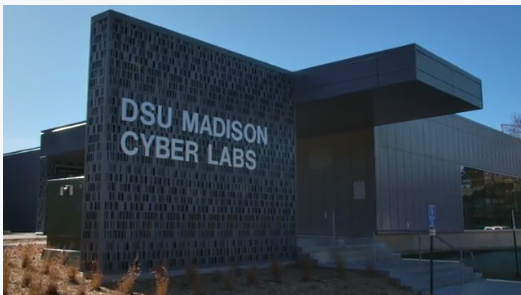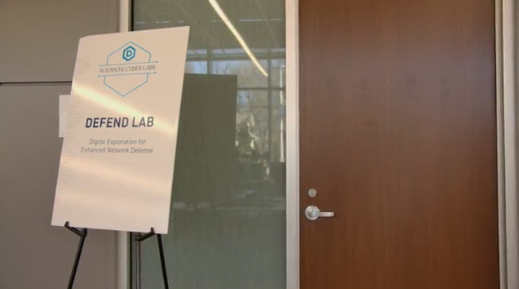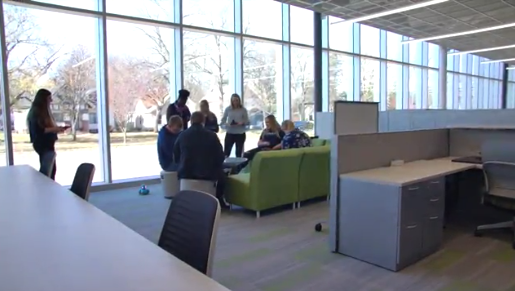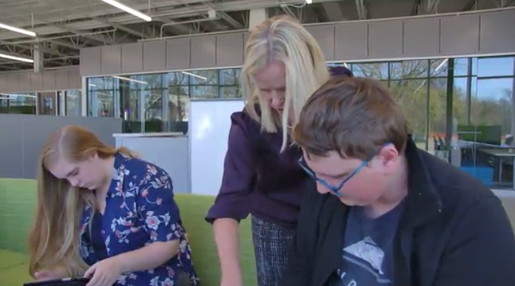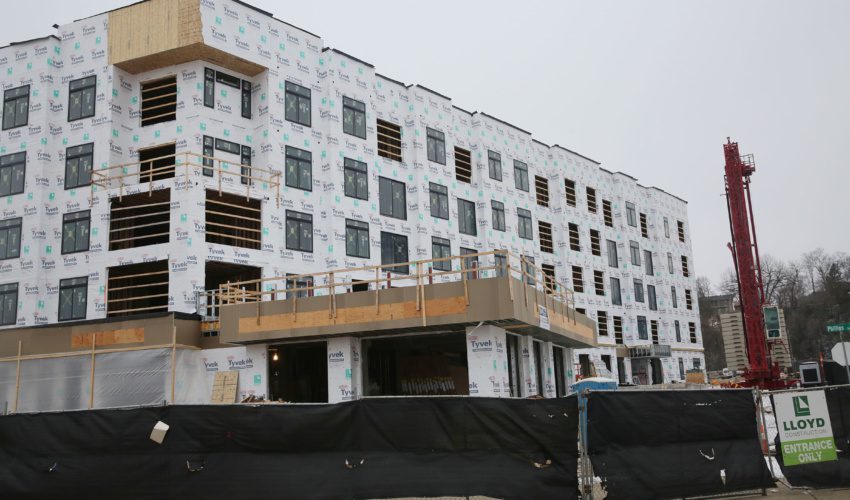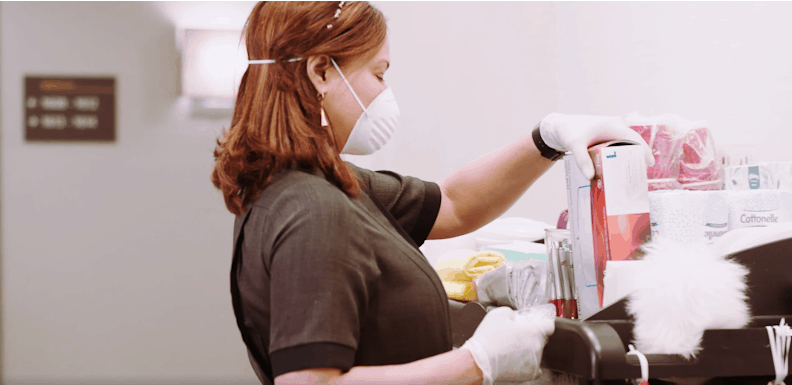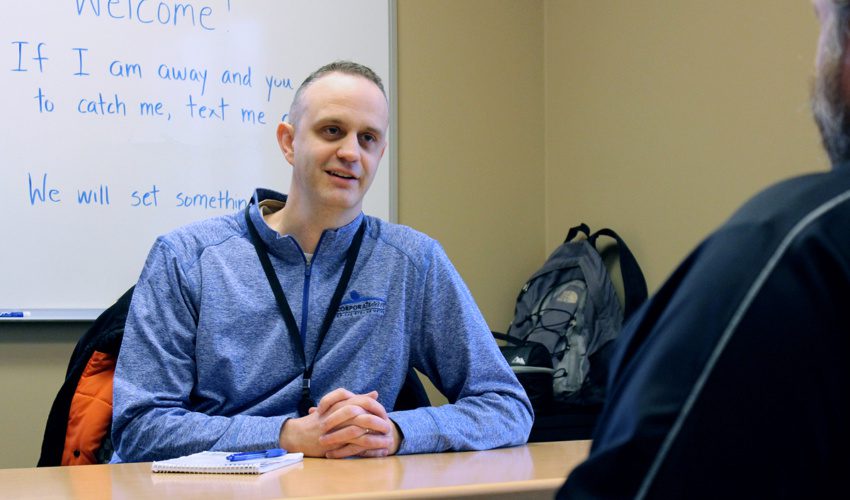‘The cyber state’ takes shape with first-of-its-kind research center
Nov. 11, 2019
This paid piece is sponsored by the Sioux Falls Development Foundation.
Think of the newly opened Madison Cyber Labs at Dakota State University as a big magnet.
“It’s going to attract people to come to work, new faculty who will be able to conduct research with federal agencies they can’t do on other campuses,” DSU president José-Marie Griffiths said. “And we think it will attract partnerships. We know it’s already attracting partnerships.”
The 38,000-square-foot building that opened in recent weeks already is fulfilling much of its promise.
As students move in, collaboration already is starting, those using the building said.
That was the idea when Griffiths proposed the concept to her campus and to the South Dakota Board of Regents just a few short years ago.
“We couldn’t have one lab per faculty member pursuing their individual research agendas. They had to be broader and involve others across campus and potentially involve external partners,” she said.
“The intent is not just research for the sake of research. It’s researching real problems, developing real solutions, but at the same time creating jobs for people who engage in that R&D and spin off companies that take that R&D and put it out into the real world.”
The Mad Labs are comprised of one dozen labs that mostly flow seamlessly into one another throughout about half the building. Their focuses range from externally testing networks and determining vulnerabilities inside organizations to studying security around the Internet of Things and connected devices ranging from thermostats and appliances to Alexa.
“Each of the labs will employ a good number of students,” said Dave Link, Mad Labs director. “One lab has five students actively working on projects right now. Another lab has a similar number. A third lab has eight students involved. So all these different labs provide opportunities for students to apply the knowledge they’re learning on a daily basis in their curriculum to actual real-world situations.”
Another part of the building is for classified research, and that’s positioning Madison and the broader Sioux Falls region for more economic development, Griffiths said. The building can accommodate about 180 jobs – positions she expects will begin filling up as the center is accredited by the National Security Agency.
“This is opportunity then for our graduates, who currently have to leave the state to do classified work because they have to be in a facility that can accommodate it, to stay home,” Griffiths said.
“And a number of our graduates who have been gone for a while can come back. So the Cyclops Lab is really a way for us to try and keep some of our graduates in South Dakota, attract some of our graduates back and attract people who want to come live and work here and have meaningful work they can do for federal agencies.”
There is enough potential that the classified work eventually could expand to Sioux Falls, she added. And the people skilled in cybersecurity work could be an impetus for other related businesses to relocate or expand in the area.
“There’s tremendous potential,” she said. “We could easily expand to well beyond 180 positions. And Sioux Falls makes sense. It’s a major city; it has all the amenities young people want to have.”
Sioux Falls could accommodate up to 1,000 industry workers, she predicted.
“It would set the state into that ‘cyber state’ position. That’s really powerful.”
Back in the Mad Labs, area businesses also are beginning to become involved with DSU and the opportunities that exist for cyber research.
The Digital Forensics for Cyber Enforcement, or DigForCE Lab is available as a resource for businesses, including those that have been victimized by cybercriminals and have a need for the extraction, preservation and analysis of data from digital devices.
East River Electric is partnering on a project in Mad Labs to study energy use related to connected devices in the home.
Sioux Falls-based SDN Communications has a presence there to support its internal cybersecurity efforts and those of its customers.
“I’m most excited about workforce-retention potential,” said Mark Shlanta, CEO of SDN Communications, which is a partner in the Mad Labs project.
“Mad Labs will help bring new talent into the state or back to the state.”
The building also is home to the CybHER Lab, which builds on DSU’s success in attracting women into the cybersecurity field and supporting them as they pursue college degrees and professional development.
Its CybHER program was formally created in 2016 and has reached more than 14,000 girls in grades K-12 with its programming, which includes the largest girls residential cyber camp in the country.
At Mad Labs, students in the CybHER Lab are working on developing program curriculum and outreach efforts as well as collaborating with colleagues in the other labs and working on personal research.
“Our students now have a space where they can get together, brainstorm ideas and how they’re going to implement them. They’re already using it for that,” said Pam Rowland, assistant professor of cybersecurity, director of the CybHER Institute and co-founder of the CybHER program.
“I think we’re going to be pleasantly surprised by what they’ll come up with in this space.”
It all supports the larger goal of bringing more women into cybersecurity, Rowland said.
“There is such a gap in the number of workers we have, with 1.8 million job openings and so few women in the field,” she said, adding only 11 percent of current workers are women.
“So there’s just this great opportunity to bring more people into the field and have that whole diversity of thought and be able to work together to solve some of our very significant issues within the United States and the world.”
Students leave DSU “knowing how to do things,” Griffiths added. “That’s an advantage.”
And it shows. DSU students trained in cybersecurity have a 100 percent job-placement rate, Link said.
“And what we’re hearing from employers and government entities is they will take as many as we can produce.”
Look at a map of the United States and the opportunity becomes even clearer, Griffiths added.
Cybersecurity companies and related startups are located mainly on the coasts. There are a few in Texas.
“And there’s nothing in the middle of the United States,” she said. “So there’s an opportunity here because we’ve got good people, people who are able to do the work, people who want to do the work, people who prefer the lifestyle they can enjoy in this part of the world. And it’s a great place to do business. So to me, it just makes sense.”
To get connected to workforce development opportunities in the Sioux Falls area, visit win.siouxfallsdevelopment.com.


